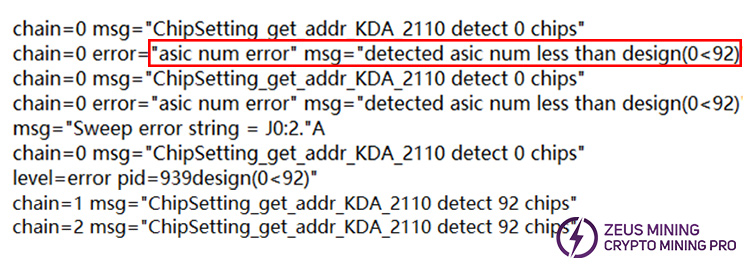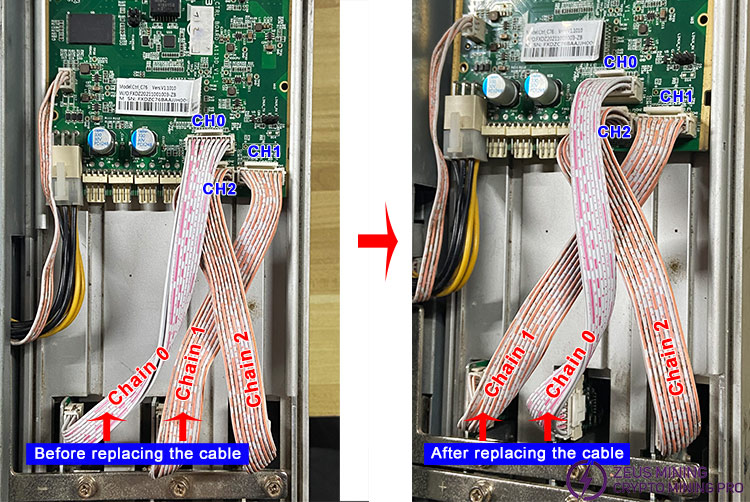


The kernel log of the Antminer KA3 miner indicates that there are 0 ASIC chips on the hash board, which will result in a decrease in the miner's hash rate and a corresponding drop in profit. It may even damage other hardware due to abnormal voltage. Quickly repair the fault problem and extend the service life of the miner.
According to the figure below, we can see that the log reports chain 0 "asic num error" "detected asic num less than design (0<92)", chain 1 and chain 2 "detect 92 chips". It means that hash board No. 1 has failed, its asic chip is shown as 0, and hash boards No. 2 and No. 3 have successfully found 92 complete chips.

1. Combining the log, we can identify the corresponding cable and hash board through the CH0, CH1, and CH2 interfaces of the control board.

2. Swap the chain 0, chain 1 and chain 2 cables. Note that only the cable at the hash board interface is removed, while the control board end remains untouched. Power on the miner and check the log. The following two situations will occur after the replacement.
• If the log still shows that chain 0 is 0 hash chips. It means that the chain 0 cable is damaged. It is recommended to replace the cable with a new one.
• If chain 1 or chain 2 reports 0 hash chips in the log, it means that the 2nd or 3rd hash board is faulty. It is recommended to perform the following troubleshooting.

1. It is recommended to use the Antminer universal chip test fixture to detect the KA3 hash board. Please refer to the following video for specific test methods.
2. After confirming the fault through the test fixture, first check the total domain voltage. The test leads of the multimeter are placed on the positive and negative poles of the first domain and the last group of domains, respectively. Under normal circumstances, the total domain voltage can be measured to be 15V.
3. If there is no problem with the total domain voltage, check whether the output voltage of the boost circuit is within normal range. The two test leads of the multimeter are placed at both ends of capacitor C29. Under normal circumstances, the measured result should be around 19V.
4. If there is no problem, then check whether the RO(RI/RX) signal voltage is 1.8V. Select half of the total number of ASIC chips for investigation, such as the RO (RI/RX) signal of the 46th hash chip. At the same time, verify that the resistance value connected to this signal is within normal range. If there is any abnormality, it is recommended to replace the chip with the same model. During the repair process, if we encounter difficulties and need help, we can refer to the Antminer KA3 Hash Board Repair Guide.
If the other two hash boards also report 0 asic failure during the subsequent mining process, we can use the same method above to troubleshoot. ZEUS MINING will continue to update miner troubleshooting articles, please stay tuned.